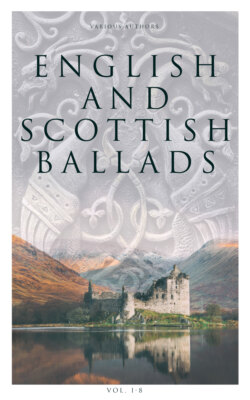Читать книгу English and Scottish Ballads (Vol. 1-8) - Various Authors - Страница 36
На сайте Литреса книга снята с продажи.
KEMPION.
ОглавлениеTable of Contents
This ballad was first printed in the Border Minstrelsy, (vol. iii. p. 230,) "chiefly from Mrs. Brown's MS. with corrections from a recited fragment." Motherwell furnishes a different version, from recitation, (Minstrelsy, p. 374,) which is subjoined to the present, and the well-known ditty of the Laidley Worm of Spindleston-Heugh, upon the same theme, will be found in the Appendix to this volume.
"Such transformations as the song narrates," remarks Sir Walter Scott, "are common in the annals of chivalry. In the 25th and 26th cantos of the second book of the Orlando Inamorato, the Paladin, Brandimarte, after surmounting many obstacles, penetrates into the recesses of an enchanted palace. Here he finds a fair damsel, seated upon a tomb, who announces to him, that, in order to achieve her deliverance, he must raise the lid of the sepulchre, and kiss whatever being should issue forth. The knight, having pledged his faith, proceeds to open the tomb, out of which a monstrous snake issues forth, with a tremendous hiss. Brandimarte, with much reluctance, fulfils the bizarre conditions of the adventure; and the monster is instantly changed into a beautiful Fairy, who loads her deliverer with benefits."
Jomfruen i Ormeham, in Grundtvig's Danmarks Gamle Folkeviser, ii. 177, is essentially the same ballad as Kempion. The characteristic incident of the story (a maiden who has been transformed by her step-mother into a snake or other monster, being restored to her proper shape by the kiss of a knight) is as common in the popular fiction of the North as Scott asserts it to be in chivalrous romance. For instances, see Grundtvig, l.l., and under the closely related Lindormen, ii. 211.
The name Kempion is itself a monument of the relation of our ballads to the Kæmpeviser. Pollard of Pollard Hall, who slew "a venomous serpent which did much harm to man and beast," is called in the modern legend a Champion Knight.
